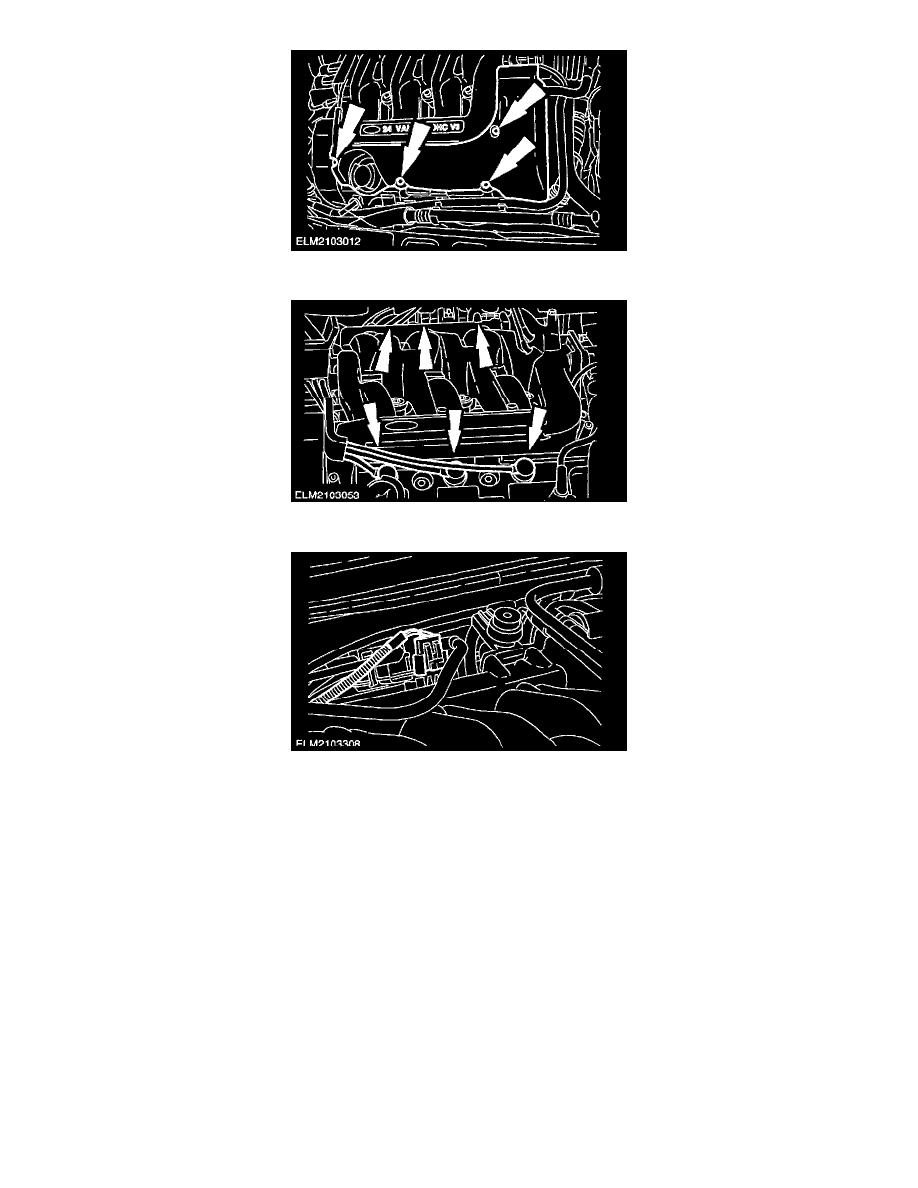Cougar V6-153 2.5L DOHC VIN L SFI (2001)

3. Start the engine. The engine will start up, run for a fan, seconds and then stall.
4. Remove the engine cover.
5. Pull off the spark plug wires and remove the spark plugs.
6. Disconnect the electrical connector from the coil.
7. Install auxiliary starter switch in starting circuit. Within ignition switch OFF, using auxiliary starter switch, crank engine a minimum of five
compression strokes and record the highest reading. Note the approximate number of compression strokes required to obtain the highest reading.
8. Repeat test on each cylinder, cranking the engine approximately the same number of compression strokes.
9. Install the components in the reverse order, observing the specified tightening torques.
10. Reset the PCM fault memory.
Interpretation Of The Results
The indicated compression pressure are considered within specification if the lowest reading cylinder is within 75 % of the highest reading.
CAUTION: If engine oil is sprayed into the combustion chamber, after carrying out the measurement run the engine at 2000 rpm for about 15
minutes, in order to burn the oil and prevent damage to the catalytic converter.
If the measurement on one or more cylinders is much lower than the specified value, spray some engine oil into the combustion chamber and repeat
the compression measurement.
If the reading greatly improves then the piston rings are damaged.
If the reading stays the same then the cause is either had valve seats or valve stem seals.
If the measurements for two cylinders next to each other are both too low then it is very likely that the cylinder head gasket between them is burnt
through. This can also be recognized by traces of engine oil in the coolant and/or coolant in the engine oil.
